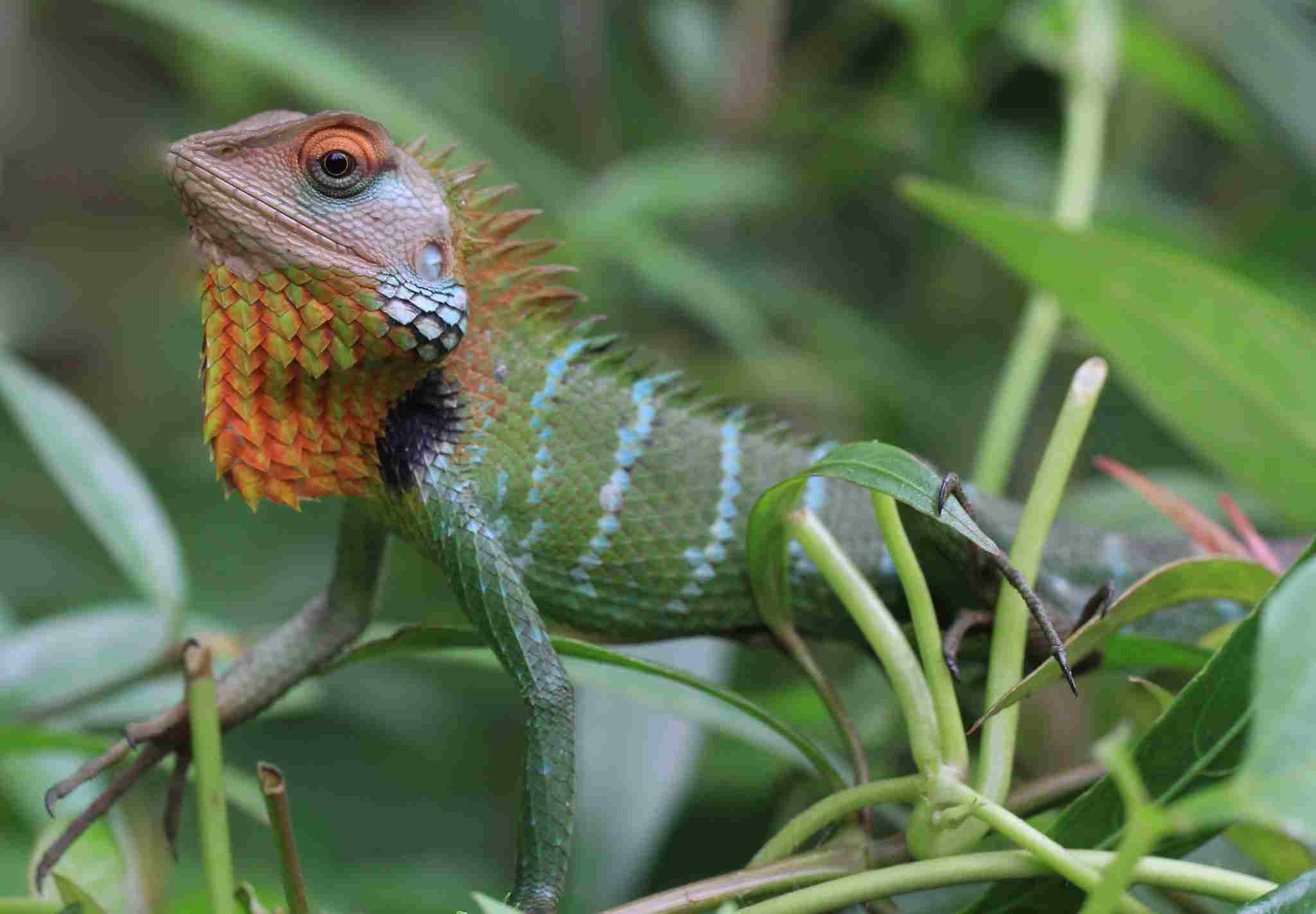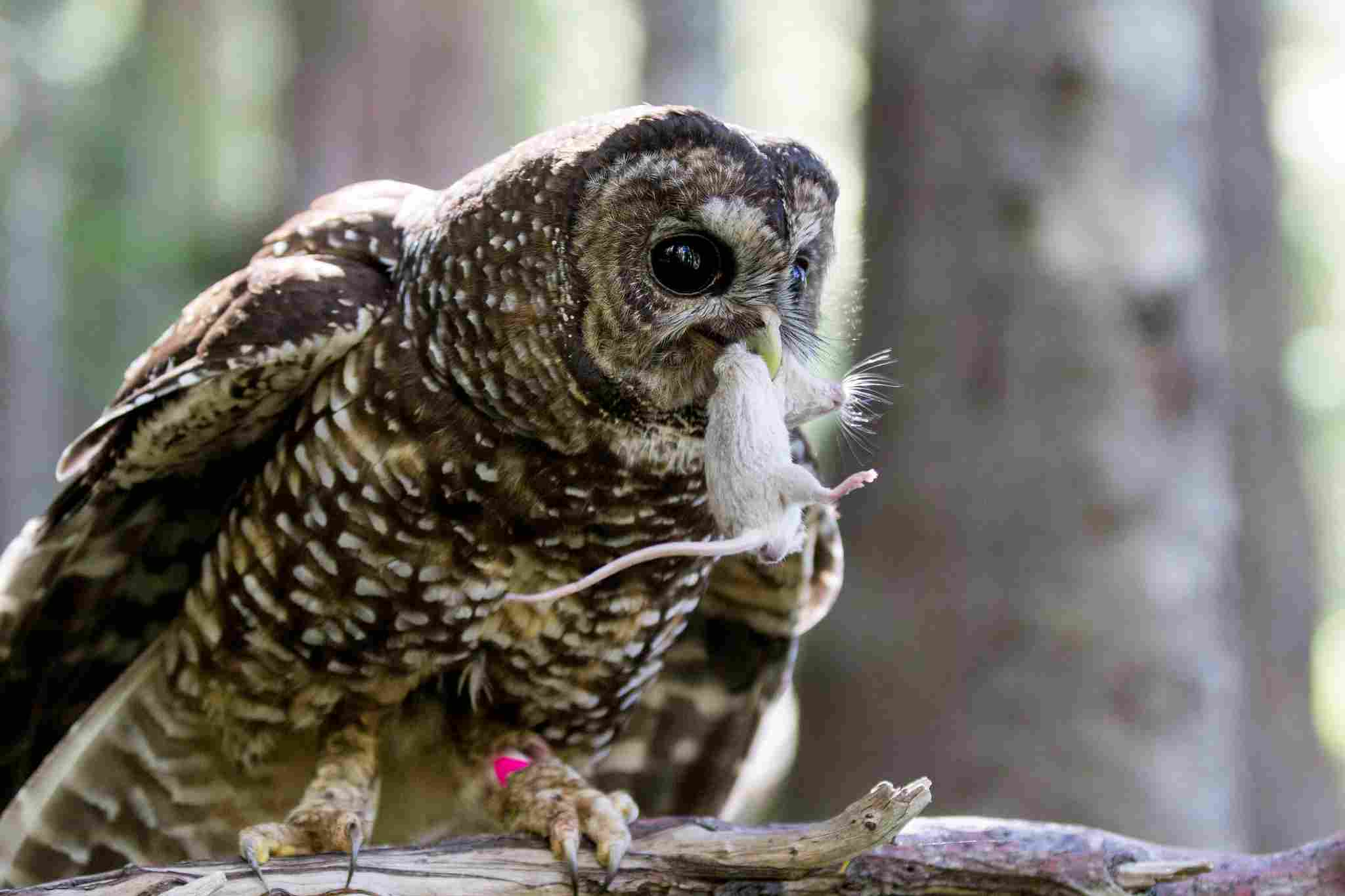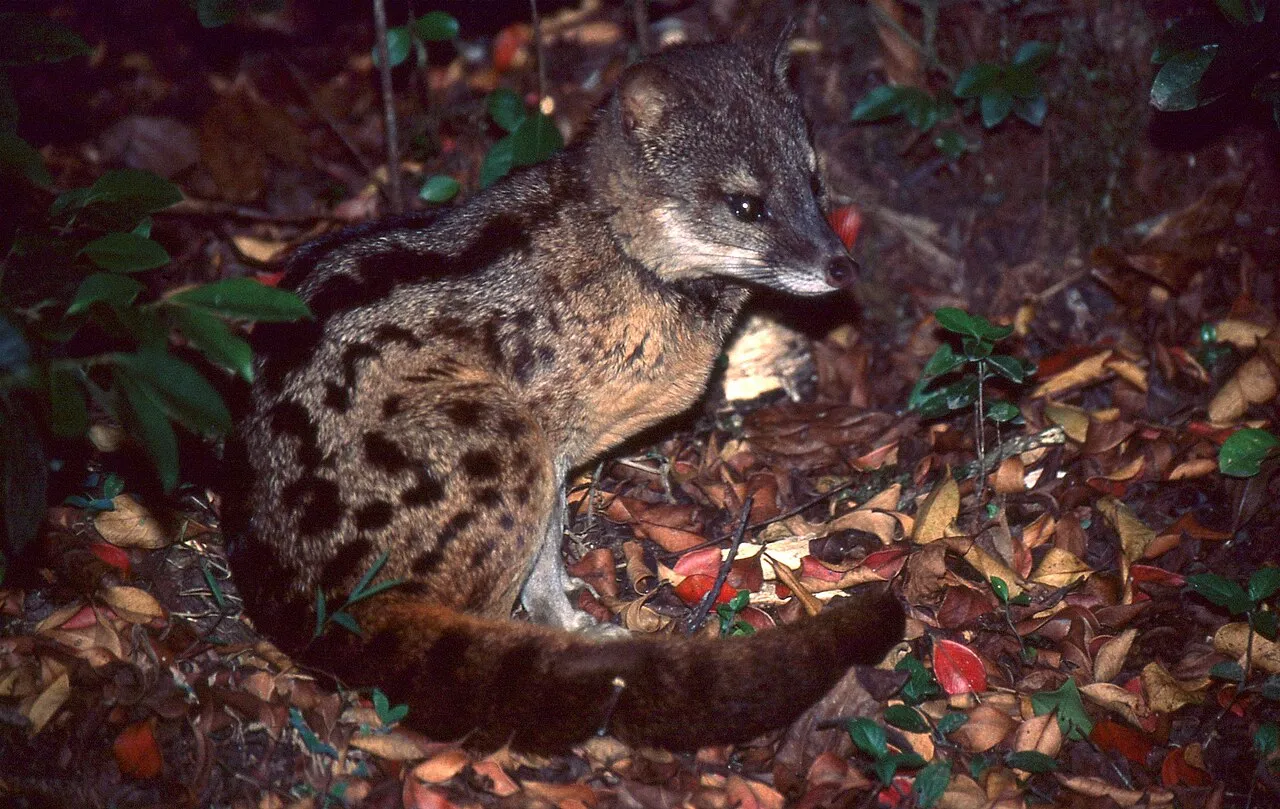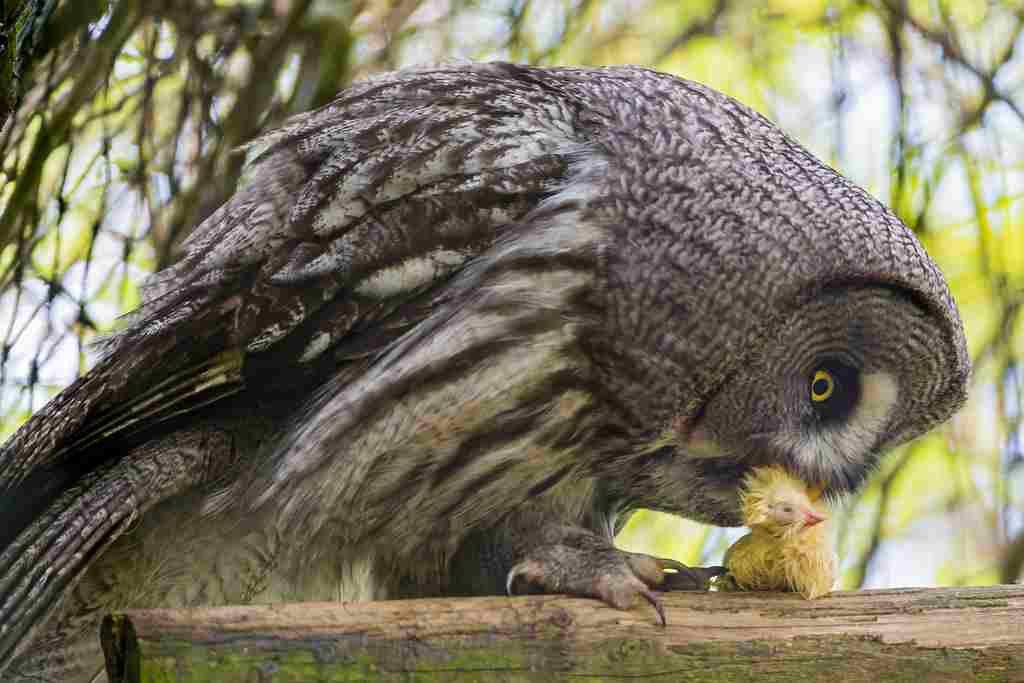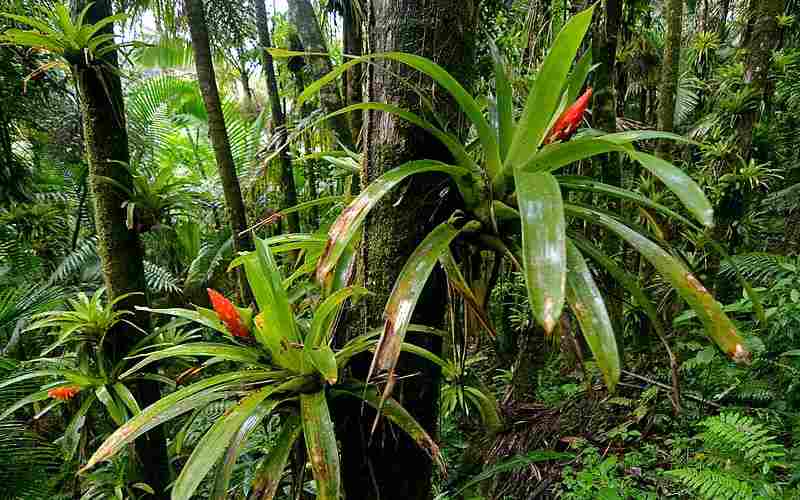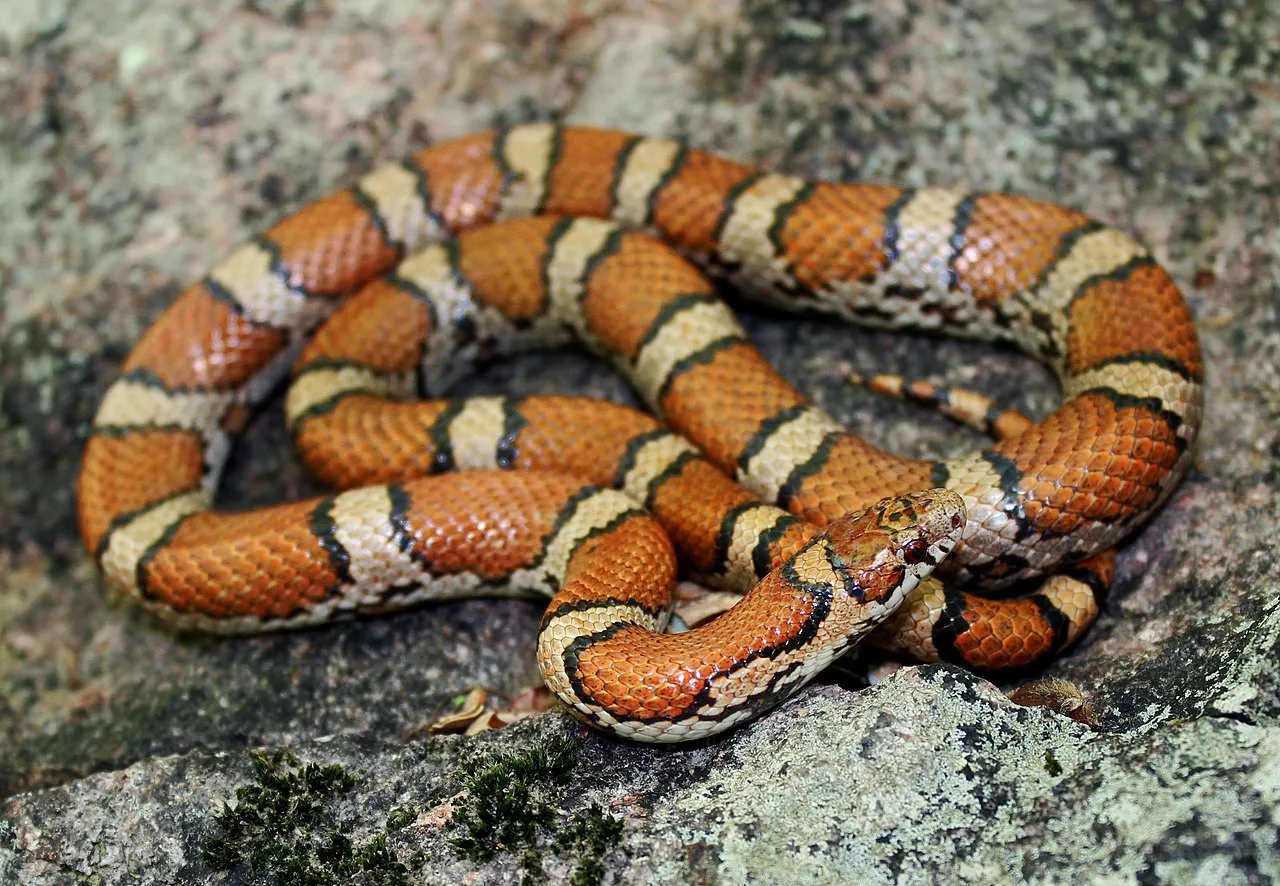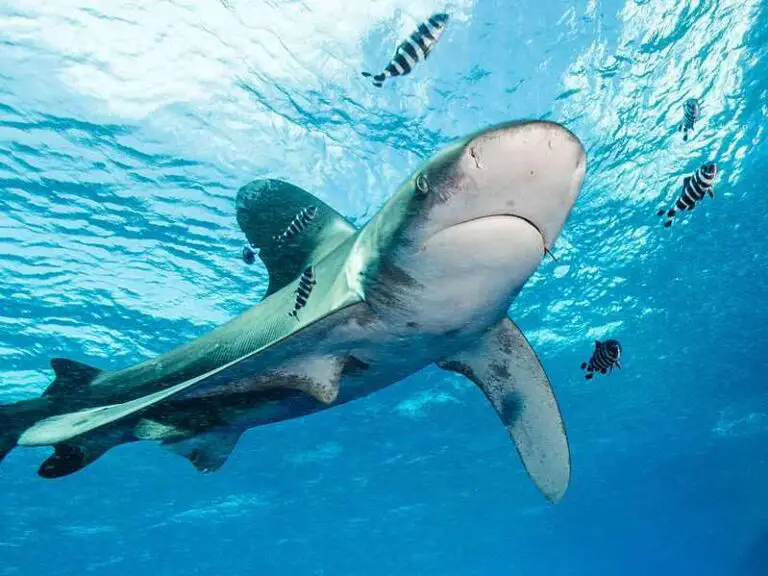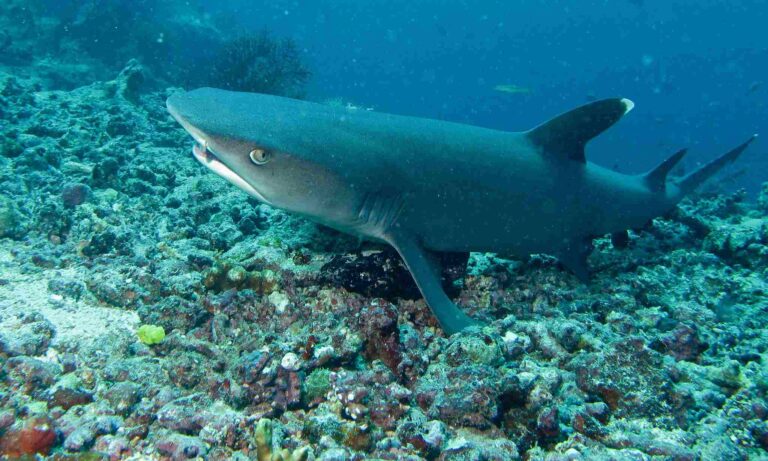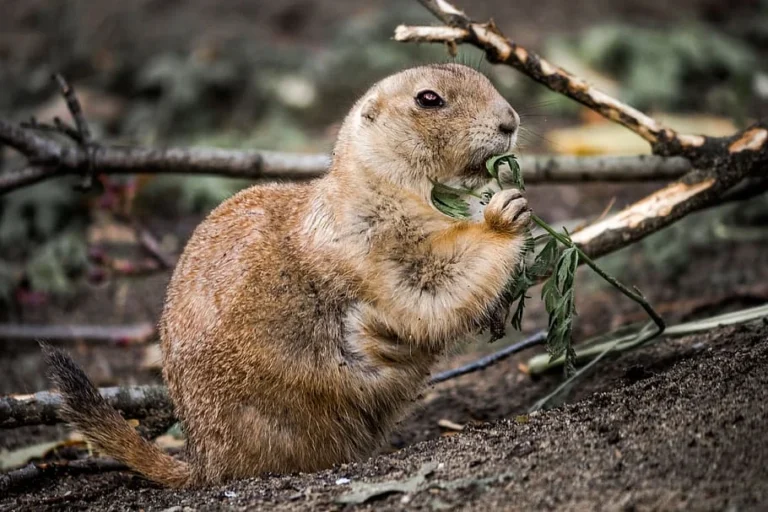7+ Secondary Consumers in the Amazon Rainforest and Their Characteristics
Secondary consumers in the Amazon rainforest are vital for regulating the populations of smaller organisms and contributing to the overall balance of the ecosystem. Examples include the ocelot, which preys on small to medium-sized mammals, the spider, which plays a crucial role in controlling insect populations, and the snake, which feeds on rodents and birds. Additionally, tree frogs help regulate insect populations through predation, while owls and bats are nocturnal predators that hunt rodents and insects, respectively. Lizards, tamarins, and spider monkeys also play important roles as secondary consumers, feeding on insects, fruits, and small vertebrates in the rainforest canopy.
1. Ocelot: The Stealthy Predator of the Amazon Rainforest
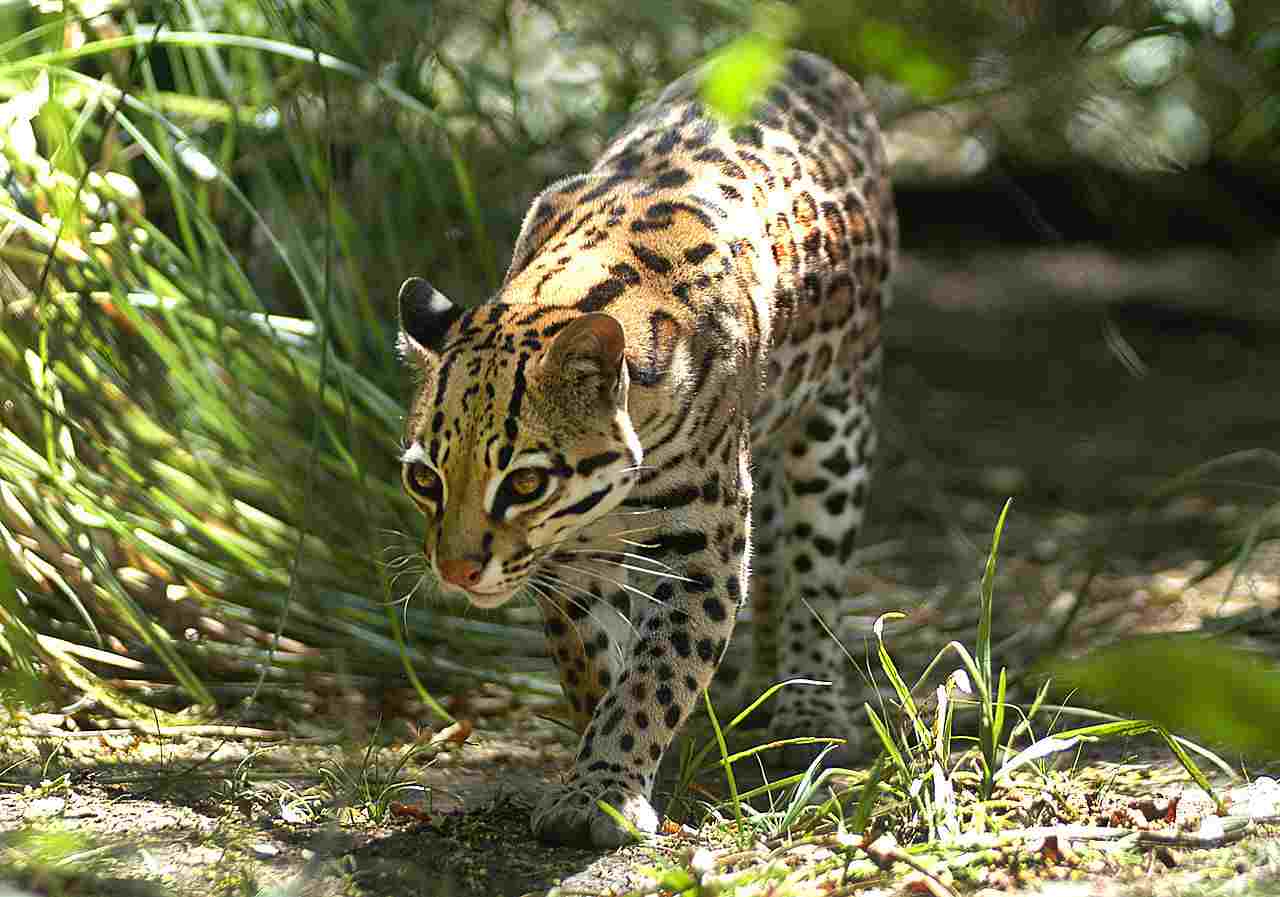
The ocelot, scientifically known as Leopardus pardalis, is a magnificent and stealthy predator that inhabits the diverse ecosystem of the Amazon rainforest. This medium-sized wild cat is renowned for its beautiful fur pattern, resembling that of a jaguar, but on a smaller scale. Ocelots play a crucial role as secondary consumers in the intricate food web of the Amazon, preying on a variety of smaller animals and helping to regulate their populations.
Physical Characteristics: Ocelots are characterized by their sleek, golden fur adorned with dark spots and rosettes. They have keen eyesight and hearing, essential for hunting in the dense vegetation of the rainforest. Their agile bodies and sharp retractable claws make them formidable hunters capable of stalking and ambushing their prey with remarkable precision.
Diet and Hunting Behavior: As secondary consumers, ocelots primarily feed on small to medium-sized mammals such as rodents, birds, and reptiles. They are opportunistic hunters, adapting their diet to the abundance of prey in their territory. Ocelots are crepuscular or nocturnal, meaning they are most active during dawn and dusk or at night, which gives them an advantage in hunting their prey under the cover of darkness.
Ecological Importance: Ocelots play a vital role in maintaining the balance of the Amazon rainforest ecosystem. By controlling populations of rodents and other small mammals, they help prevent overgrazing of vegetation and maintain biodiversity. As apex predators, they also influence the behavior and distribution of their prey species, thereby shaping the dynamics of the entire ecosystem.
Conservation Status: Despite their importance, ocelot populations face threats from habitat loss, fragmentation, and hunting. Deforestation and human encroachment into their natural habitat continue to diminish their numbers across the Amazon region. Conservation efforts focused on preserving large tracts of intact forest and implementing measures to mitigate human-wildlife conflicts are essential for the long-term survival of these magnificent predators.
2. Spider: Master Weaver of the Amazon Canopy
Spiders are ubiquitous inhabitants of the Amazon rainforest, occupying virtually every niche within this biodiverse ecosystem. With over 3,000 known species, ranging from tiny orb-weavers to massive tarantulas, spiders play a significant role as secondary consumers in the rainforest food web.
Ecological Role: As secondary consumers, spiders primarily feed on insects and other small invertebrates, serving as important regulators of insect populations within the rainforest. Their diverse hunting strategies, including web-building, ambush predation, and active hunting, allow them to exploit a wide range of prey species, contributing to the overall balance of the ecosystem.
Web-building Species: Numerous species of orb-weaving spiders construct intricate webs that span gaps between branches and foliage in the canopy. These webs serve as highly effective traps for flying insects, providing a reliable food source for the spiders that inhabit them. Other web-building spiders, such as funnel-weavers and sheet-weavers, create different types of webs adapted to their specific hunting behaviors and habitat preferences.
Ambush Predators: In addition to web-building species, the Amazon rainforest is home to a diverse array of ambush predators, including wandering spiders and crab spiders. These spiders rely on stealth and camouflage to ambush unsuspecting prey that venture too close to their hiding spots. With keen eyesight and lightning-fast reflexes, they strike swiftly to capture their prey, contributing to the intricate web of predator-prey interactions in the rainforest.
Conservation Concerns: Despite their ecological importance, spiders in the Amazon rainforest face threats from habitat destruction, climate change, and pesticide use. Deforestation and land conversion for agriculture pose significant challenges to spider populations, as they depend on intact forest habitats for their survival. Conservation efforts aimed at preserving the integrity of the rainforest and mitigating human impacts on spider populations are crucial for maintaining the ecological balance of this biodiverse ecosystem.
3. Snake: Silent Predators of the Understory
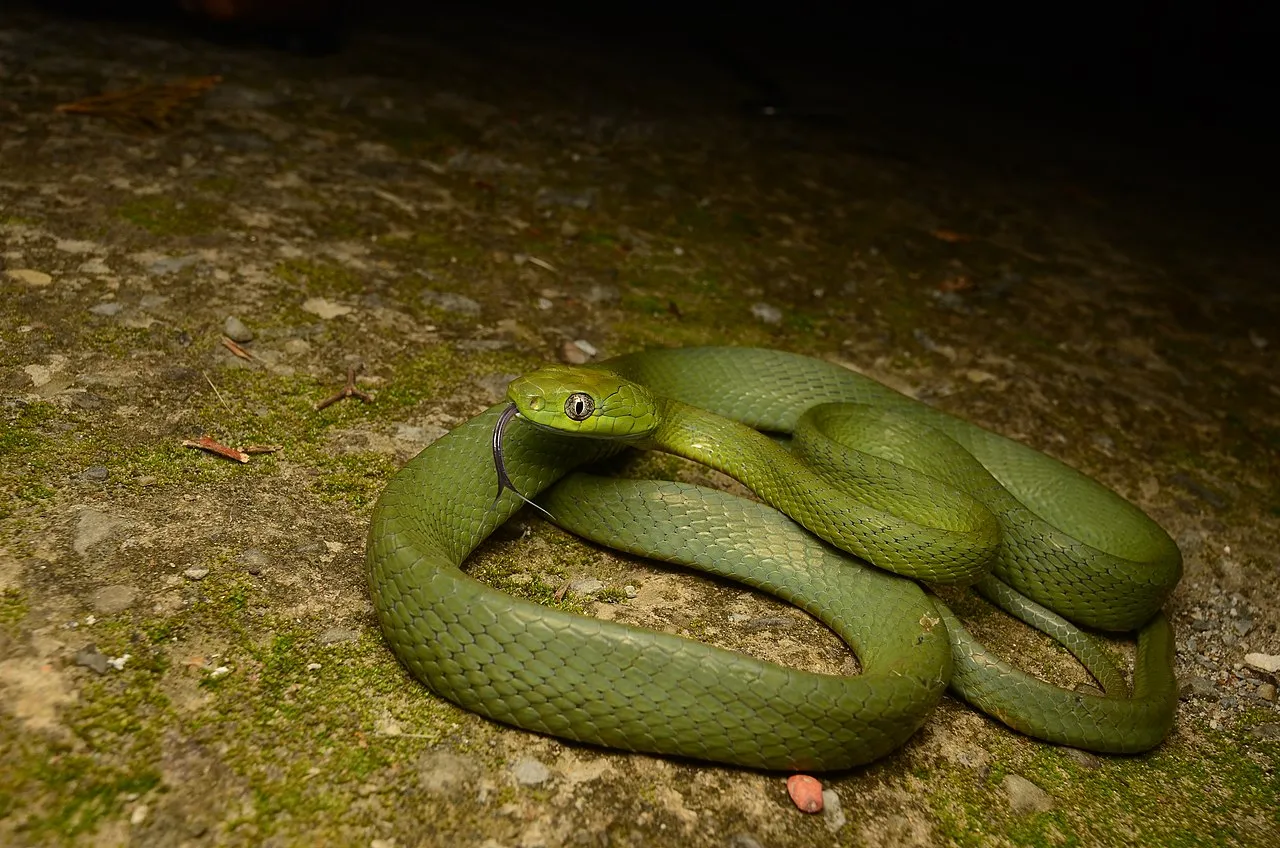
Snakes are iconic inhabitants of the Amazon rainforest, occupying a variety of habitats ranging from the forest floor to the canopy. With their stealthy hunting strategies and formidable predatory capabilities, snakes play a crucial role as secondary consumers in the complex food web of the rainforest.
Diverse Adaptations: The Amazon rainforest is home to an impressive diversity of snake species, each adapted to its specific habitat and prey preferences. Arboreal snakes, such as tree boas and vine snakes, are adept climbers that hunt for birds, lizards, and small mammals in the canopy. Ground-dwelling species, including anacondas and boa constrictors, target larger prey such as rodents, birds, and even small primates.
Predatory Behavior: Snakes are ambush predators, relying on stealth and patience to capture their prey. Some species use constriction to subdue their victims, while others possess venomous fangs for injecting potent toxins into their prey. Regardless of their hunting method, snakes play a vital role in controlling populations of small mammals and other vertebrates, helping to maintain ecological balance within the rainforest ecosystem.
Ecological Interactions: Snakes in the Amazon rainforest interact with a wide range of other organisms, including predators, prey, and competitors. They are an important food source for apex predators such as jaguars and large birds of prey, while also preying on smaller animals that may themselves be predators or herbivores. These complex interactions contribute to the overall stability and resilience of the rainforest ecosystem.
Conservation Challenges: Despite their ecological significance, snakes in the Amazon rainforest face numerous threats, including habitat loss, fragmentation, and persecution by humans. Deforestation and land conversion for agriculture not only reduce snake habitat but also lead to increased human-snake conflicts as snakes are forced into closer proximity to human settlements. Conservation efforts aimed at protecting snake habitats and raising awareness about their importance in the ecosystem are essential for their long-term survival.
4. Tree Frog: Guardians of the Rainforest Canopy
Tree frogs are enchanting amphibians that inhabit the lush canopy of the Amazon rainforest, where they play a crucial role as secondary consumers in the complex web of life. With their remarkable adaptations and vibrant colors, tree frogs are iconic symbols of the biodiversity and beauty of the rainforest ecosystem.
Arboreal Adaptations: Tree frogs are specially adapted to life in the canopy, where they spend the majority of their time perched on leaves, branches, and vines. Their sticky toe pads enable them to cling to vertical surfaces, allowing them to navigate the dense vegetation of the rainforest with ease. Many species possess cryptic coloration, blending seamlessly with their surroundings to avoid detection by predators.
Dietary Habits: As secondary consumers, tree frogs primarily feed on insects and other small invertebrates that inhabit the canopy. Their diet includes a variety of prey such as ants, beetles, moths, and flies, which they capture using their long, sticky tongues. By controlling populations of insects, tree frogs help regulate ecosystem dynamics and maintain the balance of predator-prey interactions within the rainforest.
Breeding Behavior: Tree frogs are known for their unique breeding habits, which often involve elaborate courtship displays and vocalizations to attract mates. Many species deposit their eggs in water-filled cavities such as tree holes, bromeliads, or leaf axils, where they hatch into tadpoles that undergo metamorphosis into juvenile frogs. These adaptations allow tree frogs to exploit a variety of microhabitats within the rainforest canopy for reproduction and survival.
Conservation Concerns: Despite their importance, tree frogs in the Amazon rainforest face threats from habitat loss, climate change, and infectious diseases such as chytridiomycosis. Deforestation and habitat fragmentation disrupt critical breeding and foraging habitats for tree frogs, while climate change alters rainfall patterns and temperature regimes, further exacerbating their vulnerability. Conservation efforts focused on preserving intact forest habitats and mitigating the impacts of human activities are essential for ensuring the long-term survival of tree frog populations in the Amazon rainforest.
5. Owl: Silent Hunters of the Night Sky
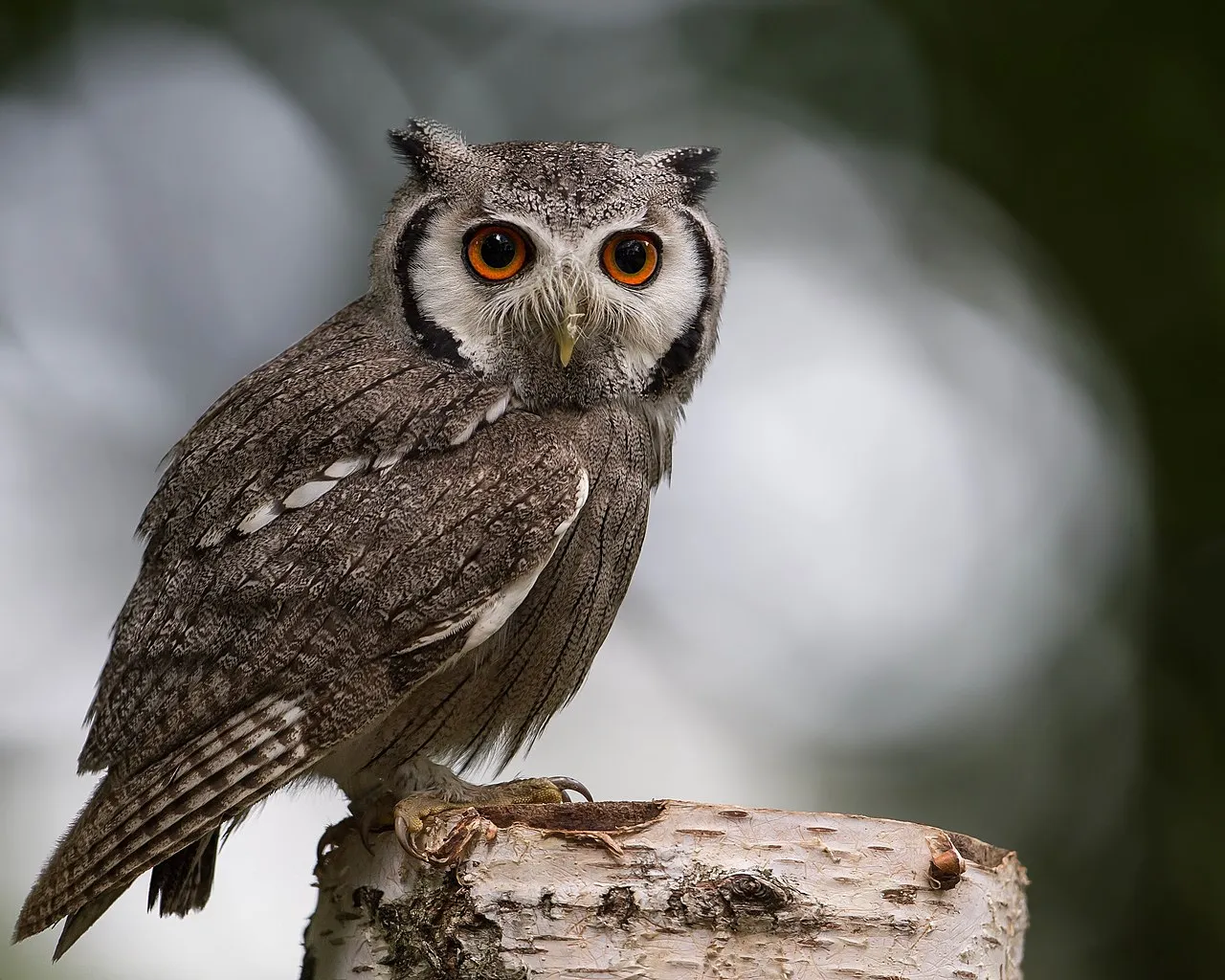
Owls are iconic birds of prey that inhabit the Amazon rainforest, playing a vital role as secondary consumers in the nocturnal ecosystem. With their keen senses and silent flight, owls are highly efficient hunters capable of capturing a diverse range of prey species under the cover of darkness.
Nocturnal Predators: Owls are primarily nocturnal, meaning they are most active during the night. This adaptation allows them to exploit the abundance of nocturnal prey species that inhabit the rainforest, including rodents, insects, small birds, and reptiles. With their exceptional night vision and acute hearing, owls are well-equipped to locate and capture prey in low-light conditions.
Silent Flight: One of the most remarkable features of owls is their ability to fly silently through the night sky. Specialized feather adaptations and unique wing morphology enable owls to reduce aerodynamic noise, allowing them to approach their prey undetected. This stealthy flight strategy gives owls a significant advantage when hunting and helps them avoid alerting potential prey to their presence.
Predatory Behavior: Owls are sit-and-wait predators, perching in elevated positions and scanning their surroundings for signs of movement or sound. Once they detect prey, owls swoop down with precision and speed, using their sharp talons to grasp and immobilize their victims. Some owl species also possess powerful beaks and strong jaws, which they use to tear apart and consume their prey.
Ecological Importance: As secondary consumers, owls play a crucial role in regulating populations of small mammals and other prey species within the rainforest ecosystem. By controlling herbivore populations, owls help maintain the balance of plant-animal interactions and contribute to overall ecosystem health and stability.
Conservation Concerns: Despite their ecological importance, owls in the Amazon rainforest face threats from habitat loss, deforestation, and human disturbance. Loss of nesting sites and prey habitat due to logging, agriculture, and urbanization poses significant challenges to owl populations. Conservation efforts aimed at preserving intact forest habitats and mitigating human impacts on owl populations are essential for ensuring their long-term survival in the Amazon rainforest.
6. Bat: Guardians of the Night Sky
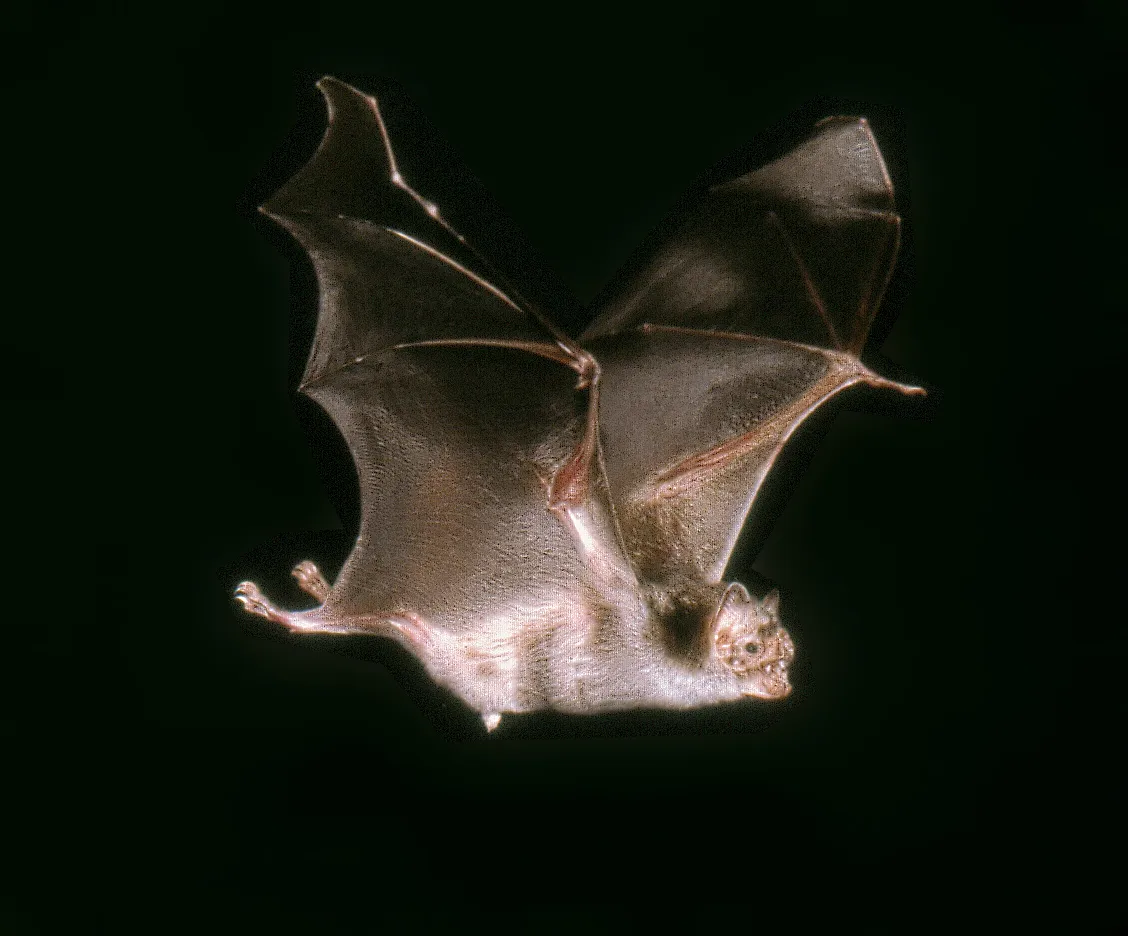
Bats are fascinating mammals that inhabit the Amazon rainforest, playing a vital role as secondary consumers in the nocturnal ecosystem. With their diverse dietary habits and unique adaptations for flight and echolocation, bats are essential contributors to the ecological balance of the rainforest.
Diverse Diets: Bats in the Amazon rainforest exhibit a wide range of dietary habits, including insectivory, frugivory, nectarivory, and carnivory. Insectivorous bats play a crucial role in controlling populations of nocturnal insects such as moths, beetles, and mosquitoes, helping to regulate insect abundance and reduce pest damage to plants.
Pollination and Seed Dispersal: Many bat species in the Amazon rainforest are important pollinators and seed dispersers for a variety of plant species. Fruit-eating bats consume large quantities of fruits and nectar, ingesting seeds that are later dispersed in their droppings, contributing to the dispersal and germination of plant species across the forest landscape.
Echolocation: One of the most remarkable adaptations of bats is their ability to navigate and locate prey using echolocation. By emitting high-frequency sound waves and listening for echoes, bats can accurately determine the location, size, and movement of objects in their environment, allowing them to hunt for prey and avoid obstacles in the dark.
Roosting Behavior: Bats in the Amazon rainforest roost in a variety of locations, including caves, tree hollows, and foliage. Some species form large colonies numbering in the thousands or even millions, while others are solitary roosters. Roosting sites provide bats with shelter from predators and adverse weather conditions, as well as safe spaces for mating and raising young.
Conservation Challenges: Bats in the Amazon rainforest face threats from habitat loss, deforestation, and human disturbance. Destruction of roosting sites and foraging habitats due to logging, agriculture, and urbanization poses significant challenges to bat populations. Conservation efforts aimed at preserving intact forest habitats, protecting critical roosting sites, and raising awareness about the importance of bats in the ecosystem are essential for ensuring their long-term survival in the Amazon rainforest.
7. Lizard: Masters of Camouflage in the Understory
Lizards are diverse and abundant inhabitants of the Amazon rainforest, occupying a variety of niches in the forest understory and canopy. With their diverse diets and hunting strategies, lizards play a crucial role as secondary consumers in the complex web of life in the rainforest.
Diverse Adaptations: The Amazon rainforest is home to an impressive diversity of lizard species, ranging from tiny geckos to large monitor lizards. Lizards exhibit a wide range of morphological and behavioral adaptations suited to their specific habitats and ecological roles. Arboreal species, such as anoles and basilisks, are adept climbers that inhabit the canopy, while ground-dwelling species, such as tegus and iguanas, forage for food on the forest floor.
Dietary Habits: Lizards in the Amazon rainforest have diverse dietary habits, feeding on a variety of prey including insects, spiders, small vertebrates, fruits, and vegetation. Some species are specialized insectivores, using their keen vision and agility to hunt for small arthropods among the leaf litter and branches. Others are omnivores or herbivores, supplementing their diet with fruits, flowers, and plant matter.
Predatory Behavior: Lizards employ a variety of hunting strategies to capture prey, including ambush predation, pursuit hunting, and sit-and-wait tactics. Arboreal lizards often lie in wait on branches or leaves, striking swiftly at passing insects or small vertebrates. Ground-dwelling species may actively pursue prey or use camouflage to ambush unsuspecting victims.
Ecological Interactions: Lizards in the Amazon rainforest interact with a wide range of other organisms, including predators, prey, and competitors. They are an important food source for birds of prey, snakes, and small mammals, while also preying on insects and other invertebrates that may themselves be herbivores or predators. These complex interactions contribute to the overall stability and resilience of the rainforest ecosystem.
Conservation Challenges: Despite their ecological significance, lizards in the Amazon rainforest face threats from habitat loss, deforestation, and climate change. Destruction of forest habitat due to logging, agriculture, and urbanization reduces available habitat for lizards and disrupts critical breeding and foraging habitats. Conservation efforts aimed at preserving intact forest habitats, protecting key biodiversity areas, and mitigating the impacts of human activities are essential for ensuring the long-term survival of lizard populations in the Amazon rainforest.
8. Tamarin: Agile Primates of the Canopy
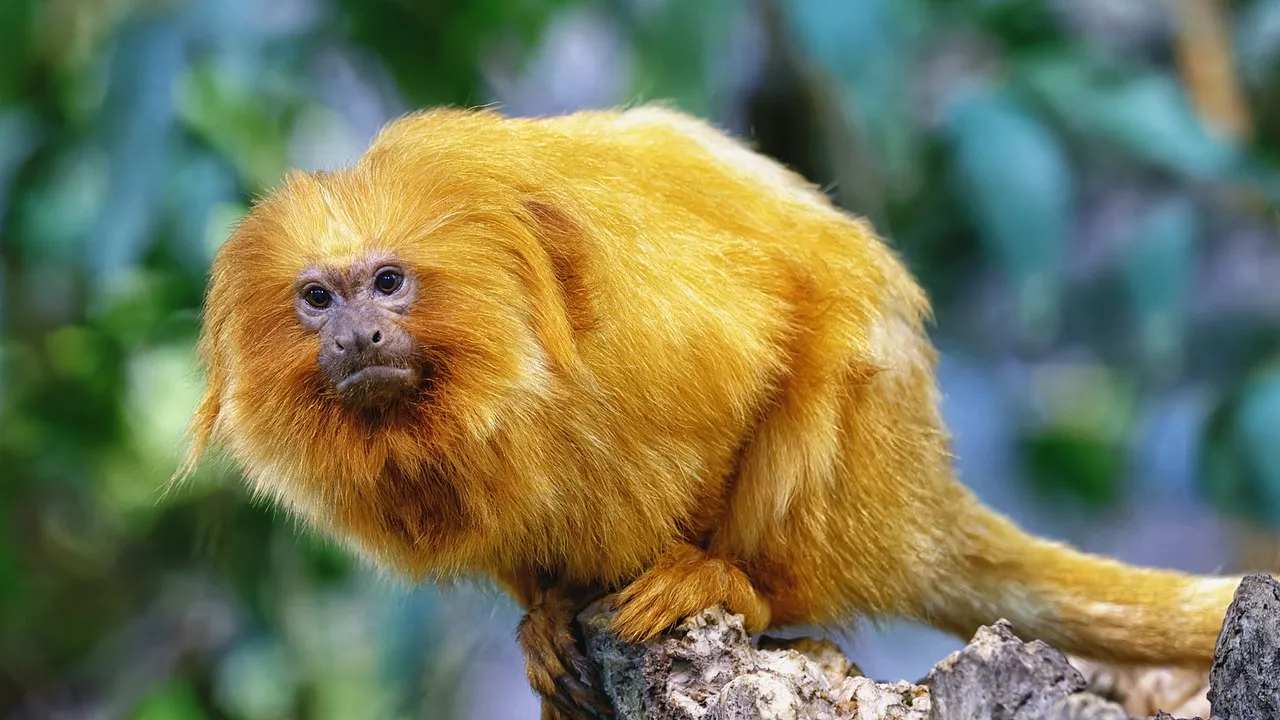
Tamarins are small, agile primates that inhabit the dense canopy of the Amazon rainforest, where they play a vital role as secondary consumers in the complex web of life. With their nimble limbs and keen intelligence, tamarins are well-adapted to their arboreal lifestyle and contribute to the ecological balance of the rainforest ecosystem.
Social Structure: Tamarins typically live in social groups consisting of several individuals, including adults of both sexes and their offspring. These groups engage in cooperative behaviors such as foraging, grooming, and territorial defense, which help strengthen social bonds and ensure the survival of the group. Within the group, individuals communicate through vocalizations, facial expressions, and body language to coordinate activities and maintain social cohesion.
Dietary Habits: Tamarins are omnivorous, feeding on a variety of foods including fruits, insects, tree sap, and small vertebrates. They use their dexterous hands and sharp teeth to manipulate food items and extract nutrients from a diverse range of sources. Fruit is a primary component of their diet, providing essential vitamins and energy, while insects and small vertebrates supplement their protein intake.
Arboreal Adaptations: Tamarins are highly adapted to life in the canopy, where they spend the majority of their time foraging, resting, and socializing. Their slender bodies, long tails, and grasping hands and feet enable them to move gracefully through the treetops, leaping from branch to branch with agility and precision. Tamarins are also excellent climbers, using their strong limbs and sharp claws to navigate vertical surfaces and exploit inaccessible food resources.
Reproductive Biology: Tamarins exhibit complex reproductive strategies, with females typically giving birth to twins or occasionally single offspring. Males and other group members assist in caring for the young, providing protection, grooming, and food sharing to ensure their survival. Juvenile tamarins learn essential skills from older group members, including foraging techniques, predator avoidance behaviors, and social interactions, which prepare them for adulthood.
Conservation Concerns: Despite their ecological importance, tamarins in the Amazon rainforest face threats from habitat loss, deforestation, and illegal wildlife trade. Destruction of forest habitat due to logging, agriculture, and urbanization fragments tamarin populations and reduces available food and nesting sites. Conservation efforts aimed at preserving intact forest habitats, establishing protected areas, and combating illegal wildlife trafficking are essential for ensuring the long-term survival of tamarins in the Amazon rainforest.
9. Spider Monkey: Acrobats of the Rainforest Canopy
Spider monkeys are iconic primates that inhabit the upper levels of the Amazon rainforest canopy, where they play a vital role as secondary consumers in the complex web of life. With their long limbs, prehensile tails, and remarkable agility, spider monkeys are uniquely adapted to their arboreal lifestyle and contribute to the ecological balance of the rainforest ecosystem.
Arboreal Adaptations: Spider monkeys are highly specialized for life in the canopy, where they spend the majority of their time foraging, resting, and socializing. Their long, slender limbs and prehensile tails enable them to move effortlessly through the treetops, using branches and vines to navigate their environment with remarkable agility and grace. Spider monkeys are also skilled climbers, capable of leaping great distances between trees and swinging from branch to branch with precision.
Dietary Habits: Spider monkeys are primarily frugivorous, feeding on a wide variety of fruits, seeds, nuts, and flowers found in the rainforest canopy. They play a crucial role in seed dispersal, as undigested seeds pass through their digestive system and are deposited in feces, helping to regenerate and maintain forest diversity. In addition to fruits, spider monkeys also consume leaves, insects, and occasional small vertebrates to supplement their diet.
Social Structure: Spider monkeys live in large, multi-male, multi-female social groups consisting of up to 30 individuals. These groups engage in cooperative behaviors such as foraging, grooming, and territorial defense, which help strengthen social bonds and maintain group cohesion. Within the group, individuals form close relationships with certain group members, often engaging in grooming and social activities to reinforce social ties.
Reproductive Biology: Female spider monkeys give birth to single offspring after a gestation period of approximately 7-8 months. Mothers provide extensive care for their young, carrying them on their belly or back for the first few months of life. As juveniles, young spider monkeys learn essential skills from their mothers and other group members, including foraging techniques, predator avoidance behaviors, and social interactions, which prepare them for independence and adulthood.
Conservation Concerns: Despite their ecological importance, spider monkeys in the Amazon rainforest face threats from habitat loss, deforestation, and illegal wildlife trade. Destruction of forest habitat due to logging, agriculture, and urbanization fragments spider monkey populations and reduces available food and nesting sites. Conservation efforts aimed at preserving intact forest habitats, establishing protected areas, and combating illegal wildlife trafficking are essential for ensuring the long-term survival of spider monkeys in the Amazon rainforest.
*Summary
-
Ocelot:
-
Medium-sized wild cat with golden fur and dark spots.
-
Primarily feeds on small to medium-sized mammals, birds, and reptiles.
-
Plays a vital role in controlling prey populations and maintaining biodiversity.
-
Faces threats from habitat loss and hunting, requiring conservation efforts for survival.
-
-
Spider:
-
Diverse species ranging from orb-weavers to ambush predators.
-
Important regulators of insect populations in the rainforest.
-
Employ various hunting strategies including web-building and ambush predation.
-
Threatened by habitat destruction and climate change, requiring conservation measures.
-
-
Snake:
-
Diverse species adapted to different habitats and prey.
-
Ambush predators with venomous or constricting methods of hunting.
-
Crucial in controlling populations of small mammals and maintaining ecosystem balance.
-
Faces threats from habitat loss and human disturbance, necessitating conservation actions.
-
-
Tree Frog:
-
Arboreal amphibians with sticky toe pads for climbing.
-
Feed primarily on insects and contribute to insect population control.
-
Important pollinators and seed dispersers, aiding in plant reproduction.
-
Vulnerable to habitat loss and disease, requiring conservation efforts for protection.
-
-
Owl:
-
Nocturnal hunters with silent flight and keen senses.
-
Prey on a variety of nocturnal animals, controlling their populations.
-
Essential for ecosystem balance and pest control.
-
Threatened by habitat loss and human disturbance, necessitating conservation actions.
-
-
Bat:
-
Nocturnal mammals with diverse diets including insects, fruits, and nectar.
-
Important pollinators and seed dispersers, contributing to forest regeneration.
-
Use echolocation for navigation and hunting.
-
Face threats from habitat loss and climate change, requiring conservation efforts.
-
-
Lizard:
-
Diverse species adapted to various habitats and diets.
-
Important prey for predators and control populations of insects and small vertebrates.
-
Vulnerable to habitat loss and human activities, requiring conservation actions.
-
-
Tamarin:
-
Small primates living in social groups in the canopy.
-
Omnivorous diet consisting of fruits, insects, and small vertebrates.
-
Face threats from habitat loss and illegal wildlife trade, needing conservation measures.
-
-
Spider Monkey:
-
Agile primates adapted to life in the canopy.
-
Feed primarily on fruits and play a crucial role in seed dispersal.
-
Live in large social groups and provide extensive care for offspring.
-
Vulnerable to habitat loss and hunting, requiring conservation efforts for survival.
-
| Species | Summary |
| Ocelot |
– Medium-sized wild cat with golden fur and dark spots. – Feeds on small to medium-sized mammals, birds, and reptiles. – Crucial in controlling prey populations and maintaining biodiversity. – Threatened by habitat loss and hunting.
|
| Spider |
– Diverse species ranging from orb-weavers to ambush predators. – Regulates insect populations in the rainforest. – Utilizes various hunting strategies. – Threatened by habitat destruction and climate change.
|
| Snake |
– Diverse species adapted to different habitats and prey. – Ambush predators with venomous or constricting methods. – Important in controlling small mammal populations. – Vulnerable to habitat loss and human disturbance.
|
| Tree Frog |
– Arboreal amphibians with sticky toe pads. – Feed primarily on insects. – Important pollinators and seed dispersers. – Vulnerable to habitat loss and disease.
|
| Owl |
– Nocturnal hunters with silent flight and keen senses. – Prey on various nocturnal animals, aiding in pest control. – Crucial for ecosystem balance. – Threatened by habitat loss and human activities.
|
| Bat |
– Nocturnal mammals with diverse diets. – Vital pollinators and seed dispersers. – Use echolocation for navigation and hunting. – Vulnerable to habitat loss and climate change.
|
| Lizard |
– Diverse species adapted to various habitats and diets. – Important prey for predators. – Control populations of insects and small vertebrates. – Vulnerable to habitat loss and human activities.
|
| Tamarin |
– Small primates living in social groups in the canopy. – Omnivorous diet. – Threatened by habitat loss and illegal wildlife trade.
|
| Spider Monkey |
– Agile primates adapted to life in the canopy. – Feed primarily on fruits and aid in seed dispersal. – Live in large social groups. – Vulnerable to habitat loss and hunting.
|
*Related FAQs and Answers
Q: Why are ocelots important in the Amazon rainforest?
A: Ocelots play a crucial role in the Amazon rainforest ecosystem as secondary consumers. They help regulate populations of smaller animals, such as rodents and birds, which in turn maintains the balance of the ecosystem. By controlling prey populations, ocelots prevent overgrazing of vegetation and contribute to overall biodiversity.
Q: How do spiders contribute to the Amazon rainforest ecosystem?
A: Spiders in the Amazon rainforest play a vital role in controlling insect populations, serving as important predators in the ecosystem. They help regulate the abundance of insect species, which in turn affects plant health and diversity. Additionally, spiders are food sources for other animals, further contributing to the intricate web of life in the rainforest.
Q: What is the significance of snakes in the Amazon rainforest?
A: Snakes are important predators in the Amazon rainforest, playing a crucial role in controlling populations of small mammals and other vertebrates. By preying on rodents, birds, and other animals, snakes help maintain the balance of predator-prey interactions and contribute to the overall health and stability of the ecosystem.
Q: How do tree frogs contribute to rainforest biodiversity?
A: Tree frogs in the Amazon rainforest are important contributors to biodiversity as both predators and prey. They help control insect populations through predation, while also serving as prey for birds, snakes, and other predators. Additionally, tree frogs play a role in seed dispersal and nutrient cycling through their interactions with plants and other organisms.
Q: Why are owls essential in the Amazon rainforest ecosystem?
A: Owls are important predators in the Amazon rainforest, particularly for controlling populations of nocturnal animals such as rodents and insects. By preying on these animals, owls help regulate their populations and maintain the balance of the ecosystem. Additionally, owls contribute to pest control, which benefits both plants and other animals in the rainforest.
Q: How do bats contribute to rainforest ecology?
A: Bats in the Amazon rainforest play multiple crucial roles in the ecosystem. They are important pollinators for many plant species and aid in seed dispersal through their feeding habits. Additionally, bats help control insect populations, including agricultural pests, making them valuable contributors to ecosystem balance and human well-being.
Q: What is the ecological significance of lizards in the Amazon rainforest?
A: Lizards are important predators in the Amazon rainforest, helping control populations of insects and small vertebrates. They also serve as prey for birds, snakes, and other predators, contributing to the intricate web of life in the rainforest. Additionally, lizards play a role in nutrient cycling and ecosystem dynamics through their interactions with plants and other organisms.
Q: Why are tamarins and spider monkeys significant in the Amazon rainforest?
A: Tamarins and spider monkeys are important primates in the Amazon rainforest ecosystem. They contribute to seed dispersal and plant regeneration through their feeding habits, which helps maintain forest diversity. Additionally, these primates play roles in nutrient cycling and ecosystem dynamics through their interactions with plants and other animals.
